Australia So Much to See


Broken Hill, New South Wales - history, mining and art
The Silverton Tramway was a 58 kilometre long narrow gauge (1,067 millimetre) railway line running from Cockburn on the South Australian
state border to Broken Hill in New South Wales. Operating between 1888 and 1970, it served the mines in Broken Hill, and formed the
link between the standard gauge (1,435 millimetre) New South Wales Government Railways, and the narrow gauge South Australian Railways
lines. Owned and operated by the Silverton Tramway Company, the Tramway was conceived as a way to transport silver ore from the newly
discovered ore deposits at Silverton, to the smelters at Port Pirie, with the line later extended to Broken Hill with the discovery
of that field. A private line was needed due to the different gauge railways in the two states, and the need to export through
Port Pirie as the closest suitable port.
The narrow gauge line was closed in 1970.
Reference: Wikipedia
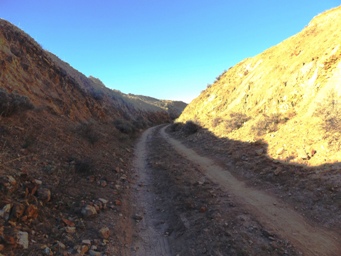
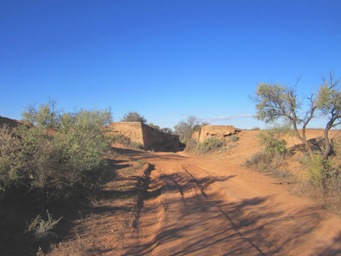
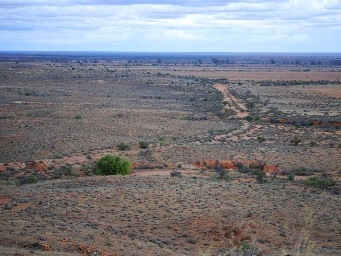
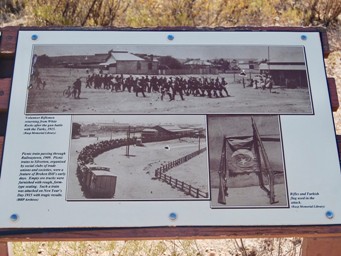
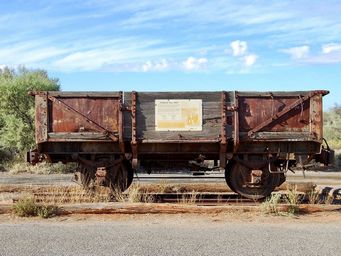
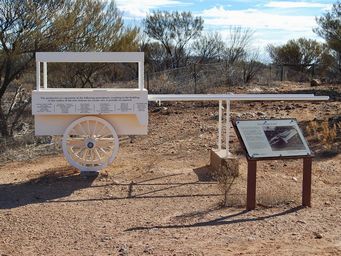
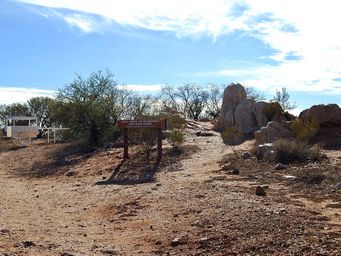
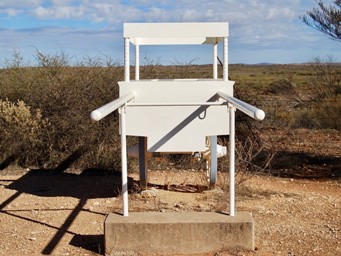
The first act of terrorism in Australia, culminating in the only world War I deaths on the Australian mainland, took place in Broken
Hill on 1st January 1915.
Picnic trains to Silverton, organised by the social clubs of trade unions and societies were popular social events in Broken Hill during the early 1900s. Ore wagons were furnished with rough wooden seats to accommodate the passengers in these open-air carriages. Manchester Unity ## organised an annual picnic outing each New Year’s Day.
World
War I had begun in the letter half of 1914. In August 1914, Germany and Turkey sign an alliance. Australia pledges to
support Great Britain, so is drawn into the conflict afar. Germans living in Australia are declared ‘enemy aliens’ and required
to report to their nearest police station #.
So, with thoughts of a War far from their minds, 1,200 people, including
young families, packed into the open carriages with happy anticipation of a fun day. Not far into the journey, an ice-cream
cart with a Turkish flag was seen near the railway fence. Two turbaned men were also seen crouching behind the bank of earth
which marks the line of the water main from Umberumberka to Broken Hill.
Unexpectedly, rifle fire broke out, with twenty to forty
shots being fired at the passing train by these two men. A man riding alongside the train was shot and killed instantly. Three people on the train died of their wounds and several others were significantly injured.
Heading for the Camel Camp
(the present site of the Afghan Mosque) while being pursued, the two men took cover at White Rocks, and in the ensuing gun battle,
a further fatality occurred when a man chopping wood behind a hotel adjacent to White Rocks was hit.
The two perpetrators
were shot, one being killed instantly and the other dying in hospital a short time later. Police took charge of the bodies,
and their ultimate burial place has never been revealed.
White Rocks Historic Site is on the edge of the Regeneration Zone. At right, looking across the model ice-cream cart onto the regeneration reserve.
Land degradation resulted from mining operations in Broken Hill. Mulga scrub surrounding the
town was removed for fuel, md combined with overstocking and the rabbit plague, denuded land allowed major wind erosion. Dust
storms were common and by the 1930s and wind blown sand was threatening houses on the outskirts of town.
The regeneration
scheme was initiated by Albert Morris of the Zinc Corporation in 1936 on its leases at the southern end of the line of Lode with an
area being fenced for protection from winds and rabbits, and plants with local native vegetation.
The mining companies
and council then cooperated to fence a one kilometre wide belt round the town.
The Regeneration Reserve
Who were these murderers?
Mullah Abdullah was born probably in Afghanistan or a nearby region of India (Pakistan) in 1855. From about 1899 he worked at Broken
Hill, New South Wales, probably as a camel driver and certainly as Mullah to the Afghans at the local 'Ghantown'. As spiritual head
of a group of cameleers, he led the daily prayers, presided at burials and killed animals halal for food consumption. A sanitary inspector
twice prosecuted him for killing sheep for meat illegally. This may have been the reason he took part in the shooting. The sanitary
department foreman was one of those killed in the shooting, while the chief sanitary inspector as named in a note left by Mullah Abdullah
was uninjured.
Gool Badsha Mahomed was born in 1875 near the North West Frontier of India. Gool came
to Australia in his youth and probably worked as a cameleer before going home to enlist in the Turkish Army. After fighting in four
campaigns under Sultan Abdul Mohammed Rasheed, he returned to Australia about 1912, but the camel carrying business was declining.
He worked in the silver mines at Broken Hill but he was retrenched. He became an ice-cream vendor, pushing his cart around the streets.
In World War I his religious and nationalistic fervour increased as he became incensed by the conflict and by the many unemployed
miners enlisting in the services.
With Australian troops having been sent to support British troops fighting against the Ottoman Empire
in the Middle East this would have added a further reason for Gool Badsha Mahomed to lash out and strike a blow in Australia under
the Turkish flag.
Notes, supposedly left by the attackers, connecting their actions to the hostilities between the Ottoman
and British Empires were found.
Believing he would be killed, Gool Mahomed left a letter in his waist-belt which stated that
he was a subject of the Ottoman Sultan and that, "I must kill you and give my life for my faith, Allahu Akbar."
Mullah Abdullah
said in his last letter that he was dying for his faith and in obedience to the order of the Sultan, "but owing to my grudge against
Chief Sanitary Inspector Brosnan it was my intention to kill him first."
What effect did this attack have on Australia?
In Broken Hill, residents were so enraged, that they gathered outside the German Club the night of the attack and set it alight. The angry mob then headed to the Camel Camp but the lynch mob were confronted by a detachment of civilian and military forces with
fixed bayonets lined up across the road outside the Camel Camp so the peace was held.
Only one company, Central Mine, stood down
aliens. Union leaders said nothing to support those dismissed, perhaps because aliens helped hold the line against BHP in the 1909
lockout.
In Adelaide, an angry mob tore down a Muslim flag from the minaret on a mosque.
Throughout Australia, towns with
names of German origins were changed.
Prior to becoming Prime Minister, Billie Hughes was Attorney General, and while
“enemy aliens” were already required to report to the police weekly #, Billie Hughes was pushing for internment of these people to
ensure public safety. The attack on the picnic train was the catalyst for this to occur, with up to 7,000 being placed in internment
camps during World War I.
Manchester Unity Australia Ltd is a Friendly Society company limited by shares and guarantee. Macquarie Dictionary defines a
friendly society as “A Society which by voluntary subscription of its members for the relief and maintenance of members and their
families in sickness, old age etc.” Simply a Friendly Society is an organization whose members band together for mutual, self-help.
The
first formalised “benefit” societies were possibly the mediaeval guilds, each comprising lodges and concerned with working conditions
as well as being drinking clubs. How long an individual guild lasted depended on its strength and relevance at the time. Individual
“Odd Fellows” Lodges were known to be in existence in the 1700s being formed after this early guild system broke down. At that
time there was no form of public relief to turn to in bad times, but by pledging themselves to put a few pence of their wages into
a common pool the first “Oddfellows” were able to build up funds to tide any of them, or their families, over an illness or save themselves
from a “paupers funeral”
The first Friendly Societies in Australia were established in Sydney in the 1830s, although looking
back now they were only part friendly society and part trade union.
Above compiled with assistance from signs at the Picnic Train and White Rocks sites and these references:
Trove, National Library of Australia
Sydney Morning HeraldAbove: The White Rocks Historic Site has been preserved, with a model the size of the ice-cream cart used by Gool Mahomed on display.